
![]() Contributed by Dayne Ashman, MD and Alesia Kaplan, MD
Contributed by Dayne Ashman, MD and Alesia Kaplan, MD
CLINICAL HISTORY
A male newborn was delivered at gestational age 37 weeks and 1 day via spontaneous vaginal delivery. His teenage mother was G1P1 and received routine antenatal care. His mother's blood type was A- (for which Rhogam treatment was received) and her pregnancy was complicated by preeclampsia.
The patient's birth weight was 2690 grams, with a head circumference of 33.5cm and length 49.5cm. His APGAR scores at 1 minute and 5 minutes were 8 and 9 respectively. On physical examination, he was noted to have bruising and petechia. A screening complete blood count (CBC) revealed a platelet count of 10,000 per micro liter. His petechia worsened and he was admitted to the NICU. Due to a concern for sepsis, an infectious workup was undertaken along with coagulation studies, liver function tests and serial CBC panels. The patient was kept NPO and administered both intravenous antibiotics and fluids. Investigations revealed the patient's blood type to be O+ and direct antibody test negative, while his sepsis workup was negative. CBC revealed persistent isolated thrombocytopenia.
DIFFERENTIAL DIAGNOSIS FOR NEONATAL THROMBOCYTOPENIA
The most likely causes of neonatal thrombocytopenia in a patient can be grouped according to: (a) the onset of the thrombocytopenia with respect to the time post-delivery and (b) the appearance of the neonate (See Figure 1 and Figure 2).
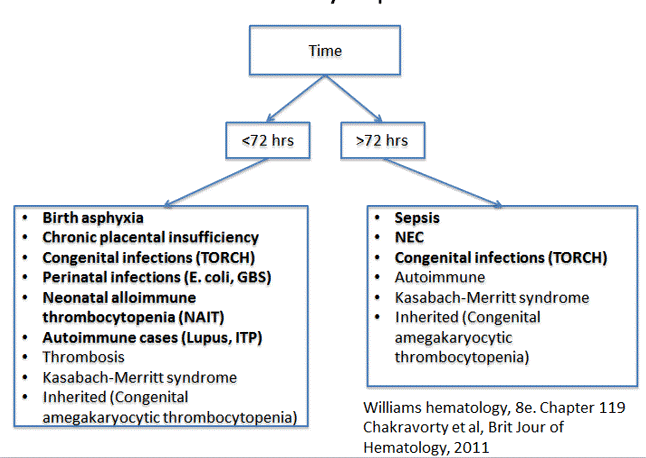
Figure 1
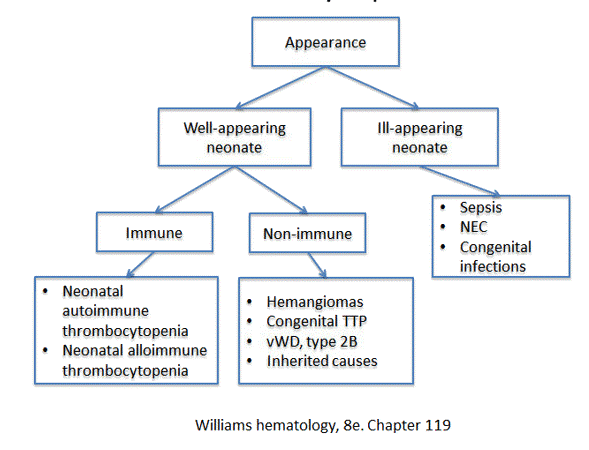
Figure 2
PATIENT FOLLOW UP
Given the persistent isolated thrombocytopenia in this well-appearing neonate, neonatal alloimmune thrombocytopenia was strongly suspected. Eventually, maternal serum testing was undertaken and identification of antibodies (in maternal serum) against HPA-1a positive platelets was noted (see Figure 3).
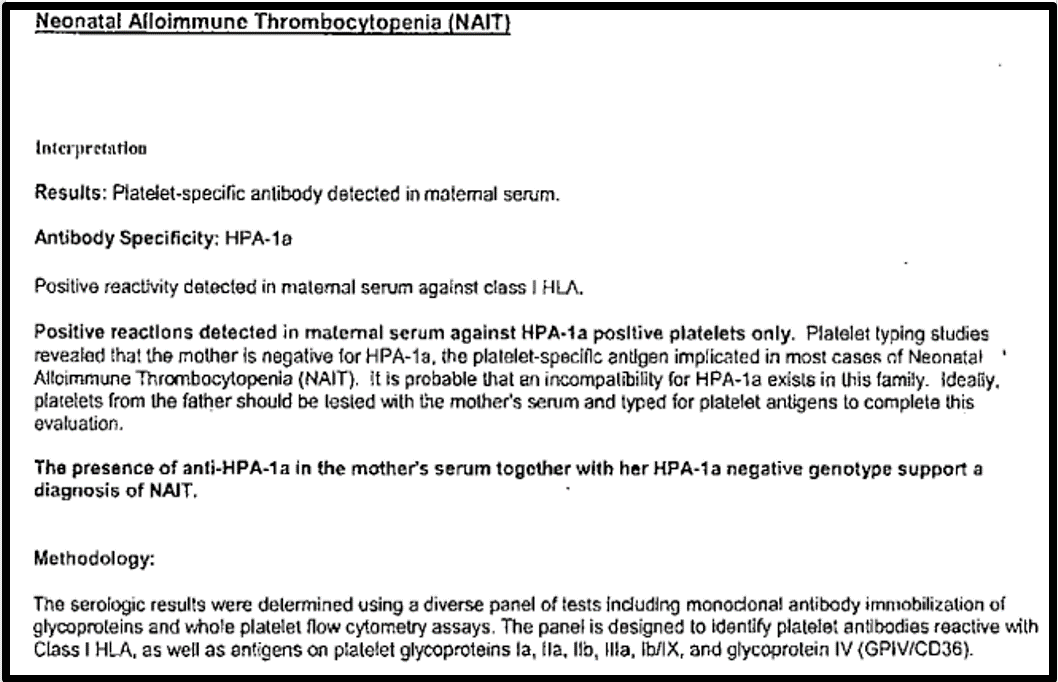
Figure 3
In the interim, the patient was treated with intravenous immunoglobulins (1g/kg per day) and random platelet transfusions with the aim of maintaining his platelet count at 30,000 to 50,000.
The patient's transfusion history as well as his daily platelet counts are shown in Figure 4 and Figure 5, respectively.
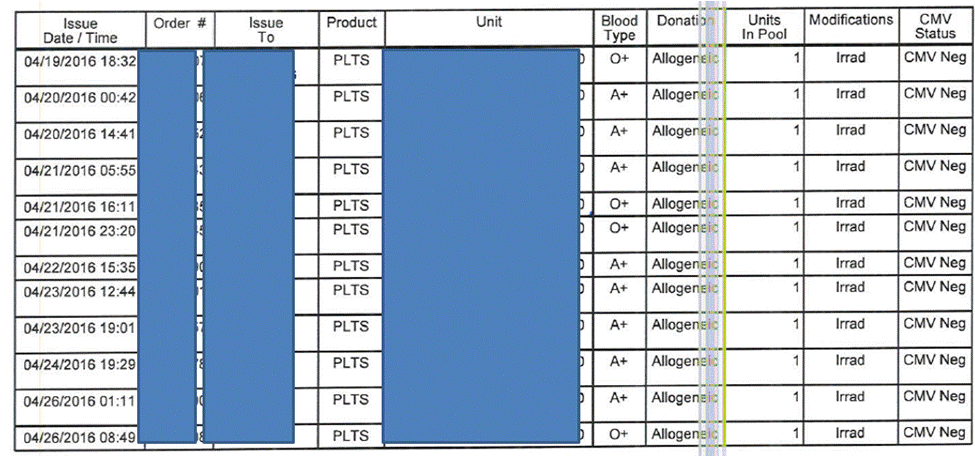
Figure 4
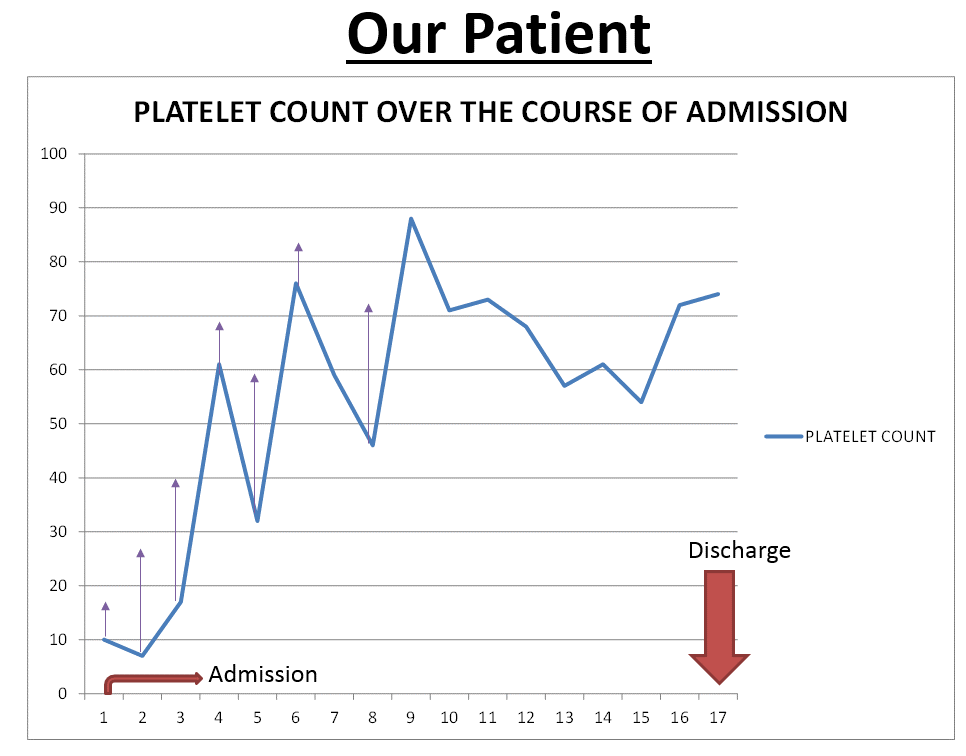
Figure 5. Nb- purple vertical arrows denote points at which platelet transfusions were received by the patient, with the last platelet transfusion occurring on day 8 of admission.